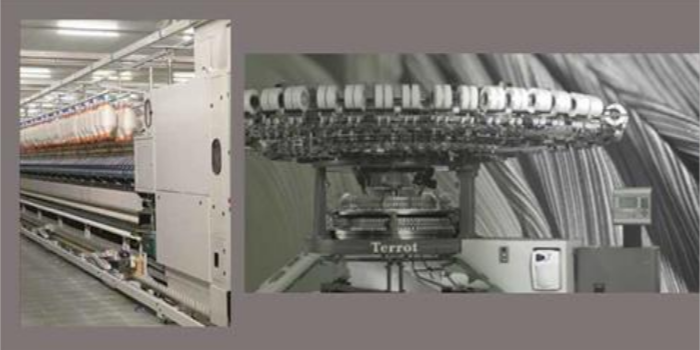
Innovations in textile industry to define post pandemic growth
A wave of innovation that has hit the textile industry is the coming of Industry 4.0. With the increasing number of innovations (backed by strong domestic consumption and a healthy export demand), the future for the Indian textile industry looks promising, says Pradip Roy.
One of the oldest industries in India, the textile Industry is the second-largest employment generator after agriculture and one of the largest contributors to the country’s exports. The industry is also responsible for the huge employment of skilled and unskilled labor. It is currently contributing approximately 4% to India’s Gross Domestic Product (GDP), about 14% to industrial production and 17% to its export earnings. With such great impact on the economy and India’s growth story, there are several disruptions happening in the textile space that all stakeholders need to apprise themselves with and prepare for the anticipated boom in the industry, on the back of the Covid-19 pent up demand.
The growth potential of the textile industry continues to be promising, owing to significant opportunities in the domestic and international markets. The long-term prospects for Indian textiles players vis-à-vis China have improved as a consequence of various political tensions. The ‘Make in India’ program is expected to gain further momentum in the textile industry, both in conventional textiles and technical textiles. The Government of India’s announcement of setting up seven mega textile parks will help to make the industry globally competitive. Besides, the government is also planning to accelerate the export of synthetic garments and apparels, supported by the PLI scheme which will boost the momentum for local manufacturing and employment generation.
The Indian textile and apparel industry is expected to grow to $ 190 billion by FY26, representing the industry’s high potential in all sectors involved. The quality of yarn exported and used domestically cannot be compromised. Similarly, the investments in post spinning sectors like fabric forming & processing would also accelerate to meet the stringent needs of the export market and the ever-increasing needs on quality apparels from the domestic market. Thus, the Indian government is introducing a number of export promotion policies for the textiles sector. It has already allowed 100 per cent FDI in the Indian textiles sector under the automatic route. It is now expected that a good balance will be maintained between new capacity creation and modernization.
The role of e-commerce
E-commerce has been playing a major role in the textile and apparel industry. It provides customers a convenient way to connect with each other, and for businesses to engage and trade. The present era is such that e-commerce dominates the market and every company which aims to grow almost always has an online presence. Key players in the Indian Textile industry have been working towards moving trades online through an e-technology for the purchase of parts called “e- spares”. The entire process –right from quote creation to order placement to making payments – is now online. This has not only reduced the turnaround time for order placement and fulfillment but also improved the purchase experience
Voltas’ principal Lakshmi Machine Works (LMW) was the first to introduce “Online ordering of parts and components” more than a decade ago. It is pertinent to mention here that more than 99% of the orders received by our Principals LMW now are through the aforesaid system.
However, when it comes to the purchase of capital textile machinery, most of the business transactions take place over personal interactions since it involves technological discussion over various areas like technological capabilities of the machines, features, scope for customization, Preparation of Production planning chart etc.
Industry 4.0
Once considered a handicraft, textiles have now become a highly urbane, scientific and engineering activity of new types of fibers and technologies. This sector now encompasses engineering in the fields of mechanical, electrical, computer, chemical, electronic and more. With changing trends and growing consumer demands, technology has been reshaping the textile industry to meet these demands and trends.
A wave of innovation that has hit the textile industry is the coming of Industry 4.0 – automation and introduction of artificial intelligence in the textile machinery sector. These advances allow companies to remote monitor & control their machinery as well as in data collection & analytics to work towards further improvement, preventive and pro-active maintenance tool to avoid breakdown, which results in high utilization and productivity. Such innovations have allowed companies to gauge the production details of the machinery & plant and the performance of the machinery through the press of a button. Any problem that occurs in the machine software could be controlled by the principals sitt




